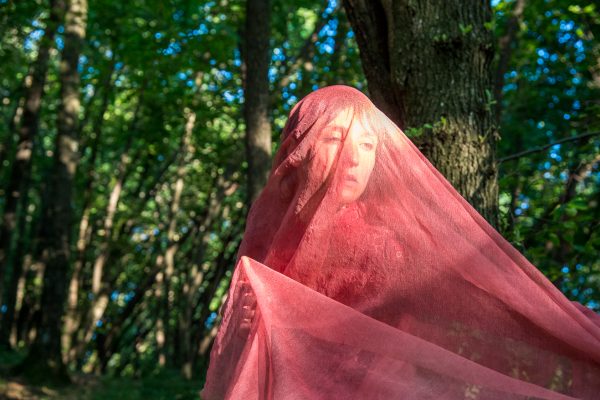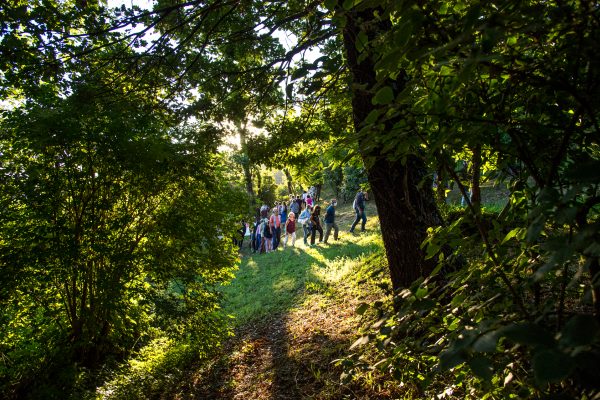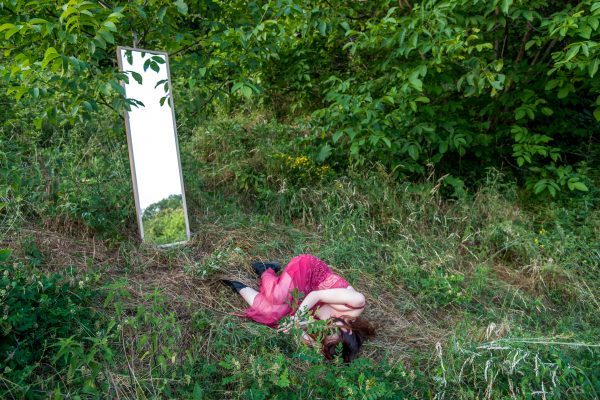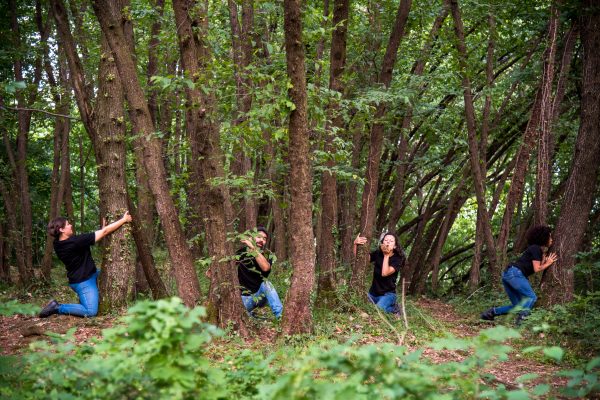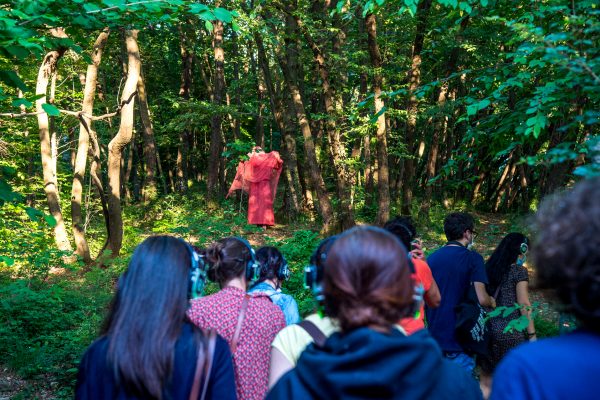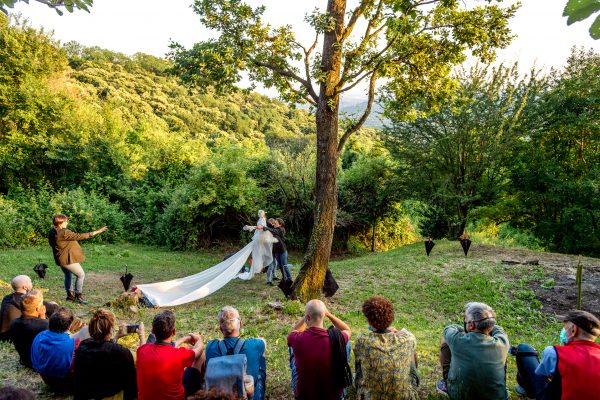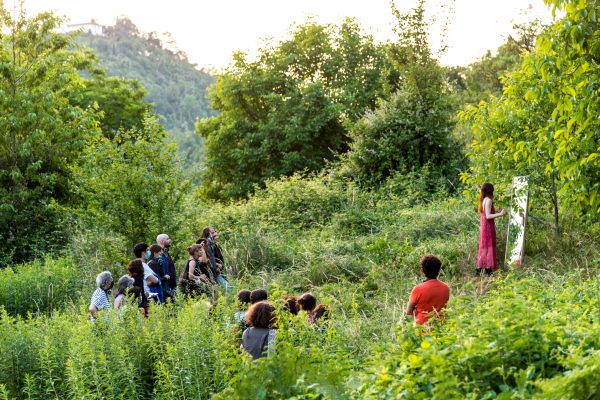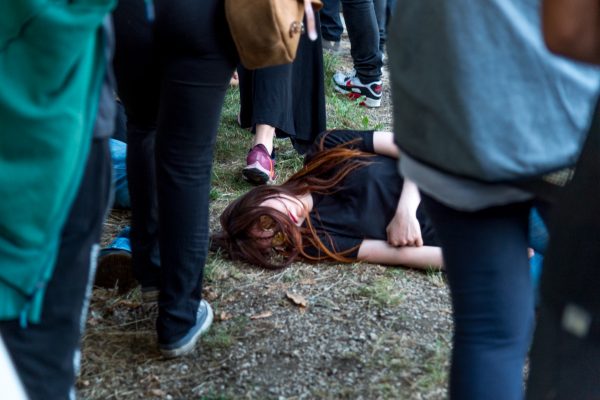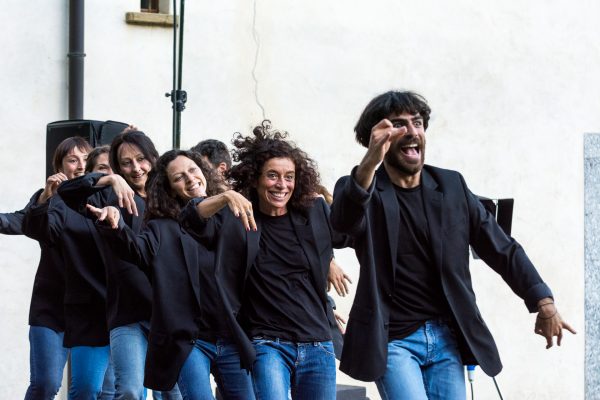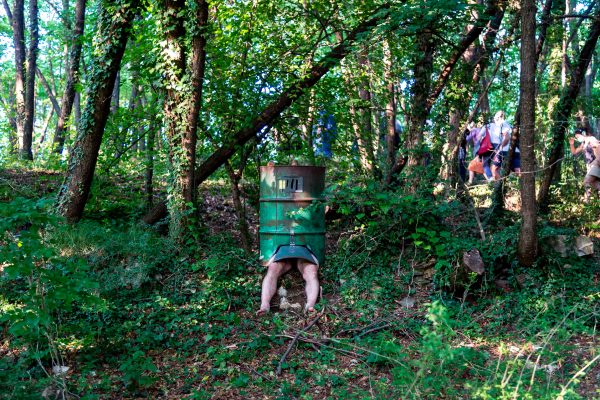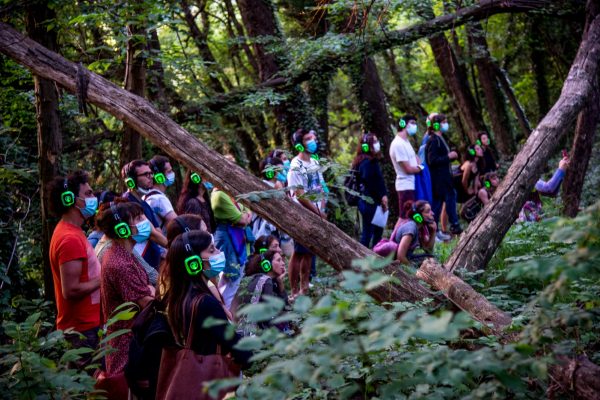Duration: 100min
Preview: June 2021
Premiere: June 2022
Hamlet and his questions are within all of us. Doubting and imagining different outcomes dependant on our actions, relationships and intentions are what makes us human. Hamlet, a personal matter is a journey. Actually, it is two different ones.
Hamlet, a personal matter is the result of the desire to experiment with a mixture of theatre in the landscape, immersive performances, and performances for a single spectator. These are areas which have been developed for years by the artists of Campsirago Residenza, and which were also the subject of the higher education course which forms the basis of this show.
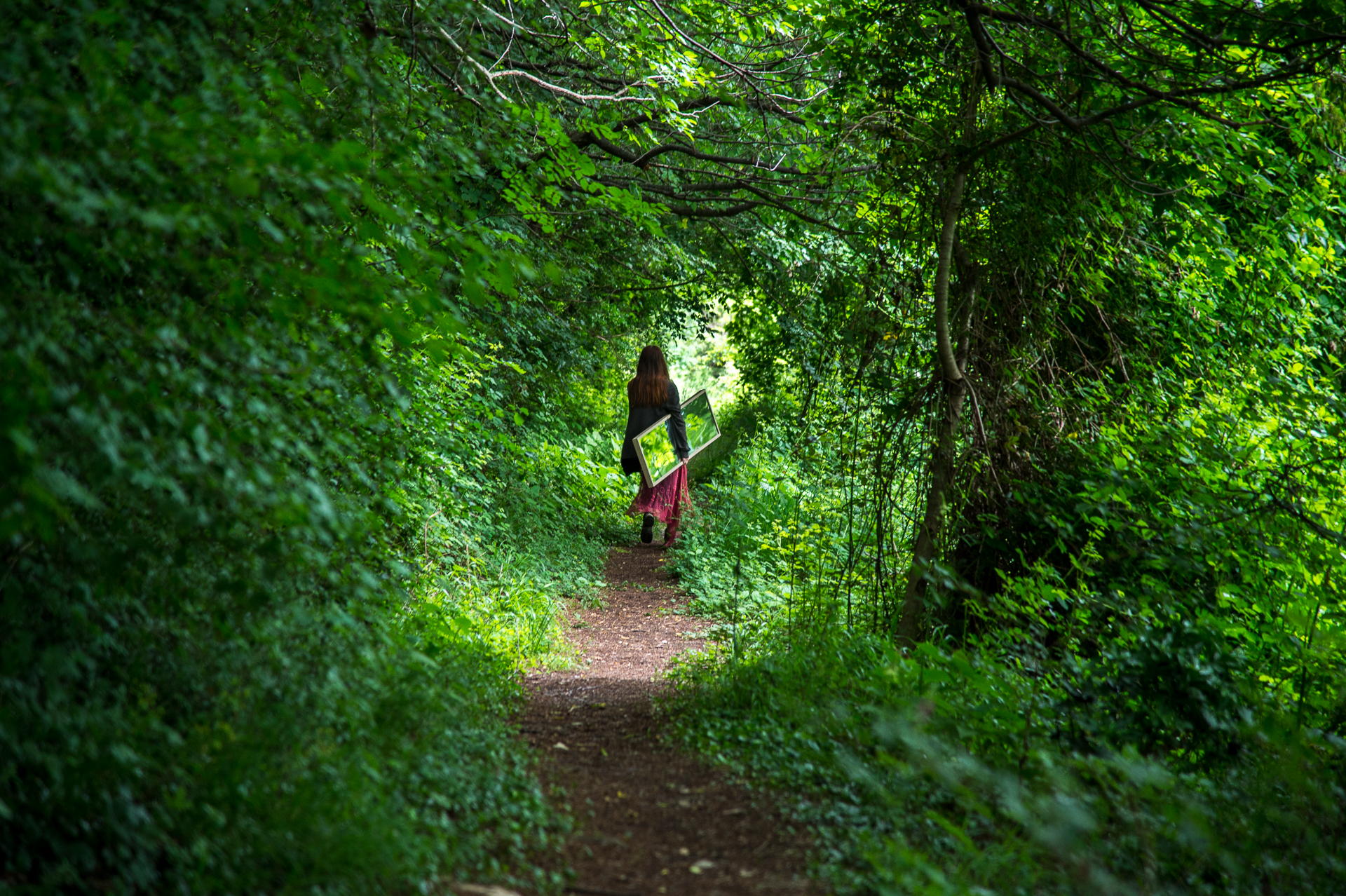
This performance is like a tattoo, which gets under your skin and refuses to let go. It stays with you through the years. […] This performance makes you grow and remains caught in your hair, hanging onto your dreams and to your days. Tommaso Chimenti – Recensito
This work is a shining example of what I have called expanded theatre or augmented reality. […] It is a synthesis of elements which attempt to overcome the rift in modern Italian theatre, which is divided between a style in which the word dominates and one where the word is almost entirely stripped of value. Maria Dolores Pesce – Dramma
“Hamlet, a personal matter” is an epic endeavour. Vittoria Majorana and Damiano Perllegrino – Altre Velocità
I have seen many productions of Shakespeare’s Macbeth, Julius Caesar and Richard III, but many fewer of Hamlet. The reason can’t be chance, as this doesn’t really exist. Maybe, more simply, Hamlet is daunting. If I was a theatrical director, I would tremble at the prospect of having to deal with this most classic of classics, the work which, together with Sophocles’s Oedipus Rex, is the foundation of western theatre. But even if I had seen many more productions of this play, I am sure that “Hamlet, a personal matter” would have had the same effect on me as it had Friday evening at the Garden of the Hesperides festival at Campsirago. It was a revelation. It left a mark and I am sure I will remember it even after tens of other productions are vying for space in my memory. They will find it hard to compete against a production such as this. Saul Stucchi – Alibi
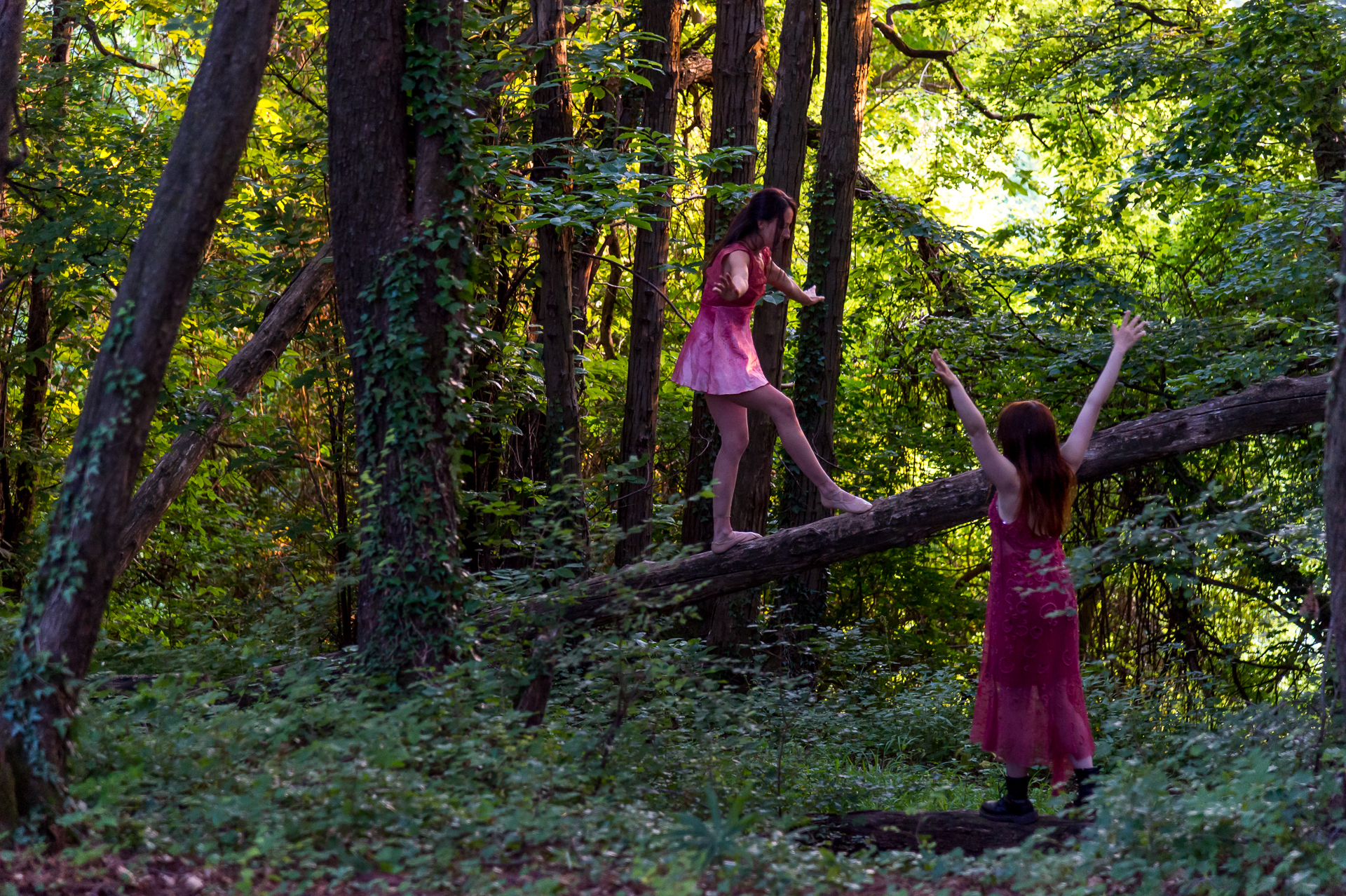
The Show
Hamlet, a personal matter is a contemporary theatrical performance, partly on stage and partly itinerant and site-specific. Through a physical and metaphorical journey it explores the themes of doubt and desire.
Hamlet is a fracture, a splintered name, a story no-one wants to hear any more. But Hamlet keeps howling, it always returns, like indigestible food, like an unceasing melody, like a small dark splinter in the sole of the foot. Hamlet is a presence which resides in all of us, like an army ready for war. Hamlet has a thousand masks, like the secret spaces within us. It’s that ever-present thought which traps us in an inner storm.
Hamlet, a personal matter leads us through the labyrinths of the psyche, becoming in the process a collective as well as an individual experience.
Hamlet, a personal matter unites disparate artistic forms and experiences: stage theatre, a contemporary, destructured, dramatic rewriting of the themes of Hamlet, the rituals of terzo teatro, and bodies performing in the natural environment. It also includes elements of immersive theatre, in which headphones, soundscape and the script all become parts of Hamlet’s interior monologue. After he gets lost, his wandering leads him to encounters with his ghosts, merciless power dynamics, and the passion and drama of love. Hamlet, and the spectators with him, start wandering in a wood, which might as well be the edges of a town, as he continues to search for his identity.
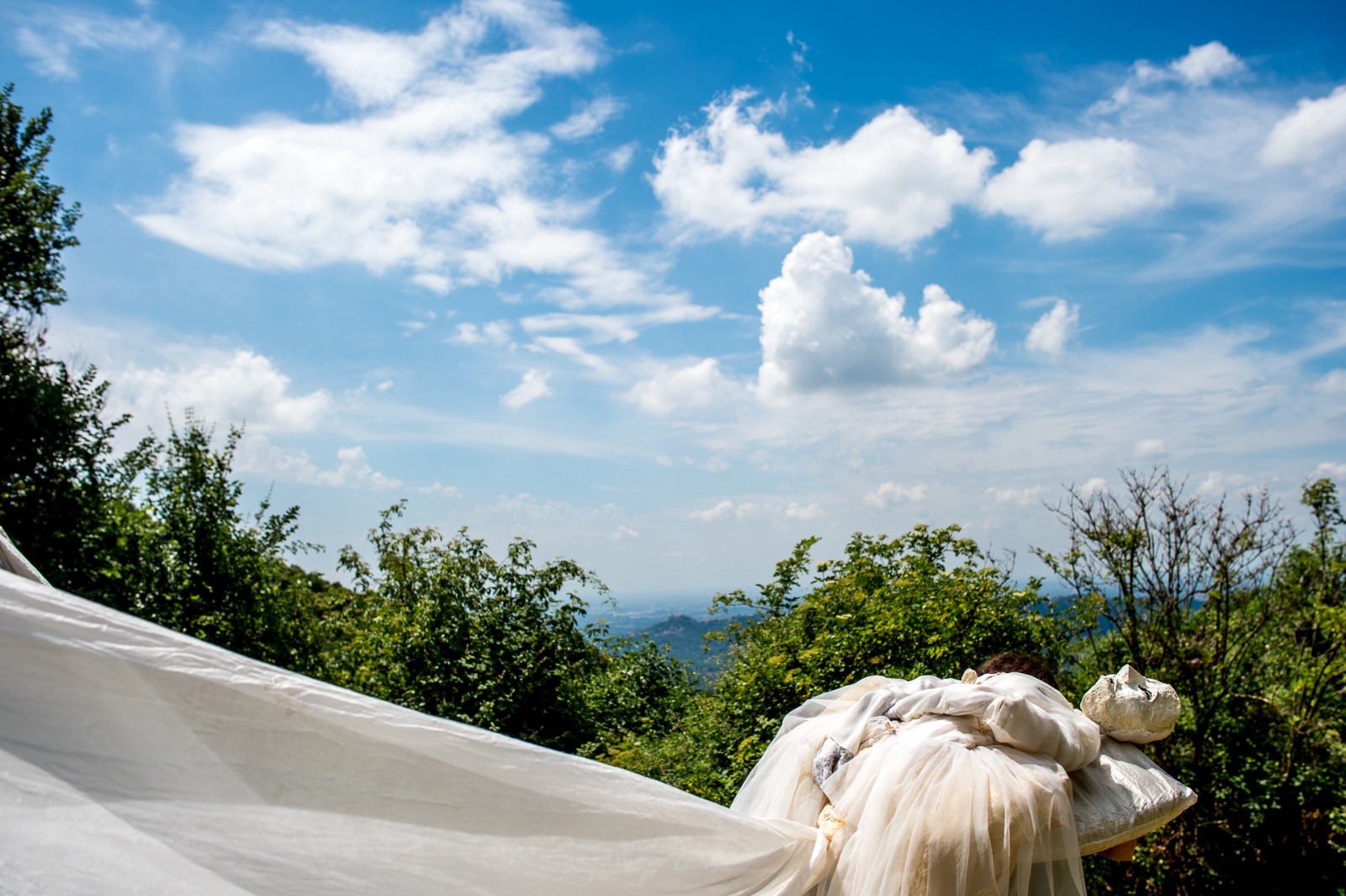
The performance on stage begins and ends with two choral pieces. The first is the marriage of Claudius and Gertrude, while the second recounts the happenings following the destruction of the court at Elsinore. Following this, the spectators are divided into three groups which are to follow three guides along three different paths, each with its own subject: madness, love and power. These three theatrical paths eventually come together in a central scene, where everybody gathers to attend Ophelia’s funeral.
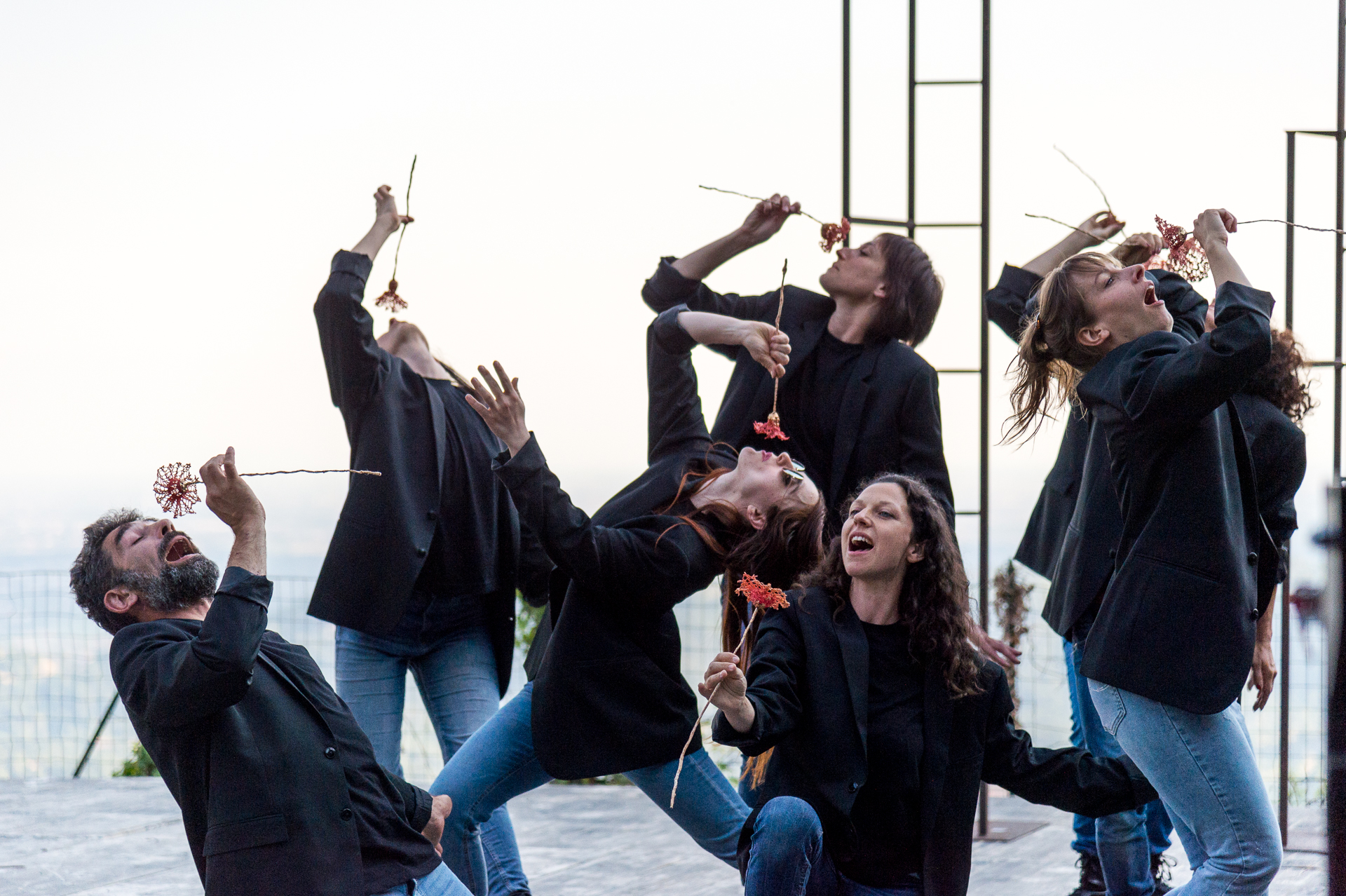
The opening of the show is the grand celebration for Claudius’s and Gertrude’s wedding: the guests dance and openly display their emotions. A massive cage at the centre of the scene reminds us that Denmark is a prison and that our minds, just like Hamlet’s, are constantly haunted by ghosts, regrets and doubts. Telltale signs are visible of the impending dissolution of the court and of the young prince’s (and the audience’s) ego. Hamlet’s doubts grow, and he starts questioning the audience: “Who are you when no-one is looking? Look inside yourself: have you made your choice? What is stopping you from dreaming?”. At the end of the celebrations a voice tells the audience to stand and to start exploring a labyrinth which stretches through a physical, symbolic and inner landscape.
In the three possible journeys they can undertake, the spectators will meet different characters and scenes which will resonate with the texts they hear in their headphones. They will then come upon Ophelia’s funeral, prepared by undertakers and accompanied by a hear-wrenching choir. Each group will then continue on its journey in single file towards other scenes in which each actor becomes a vision and a ghost.
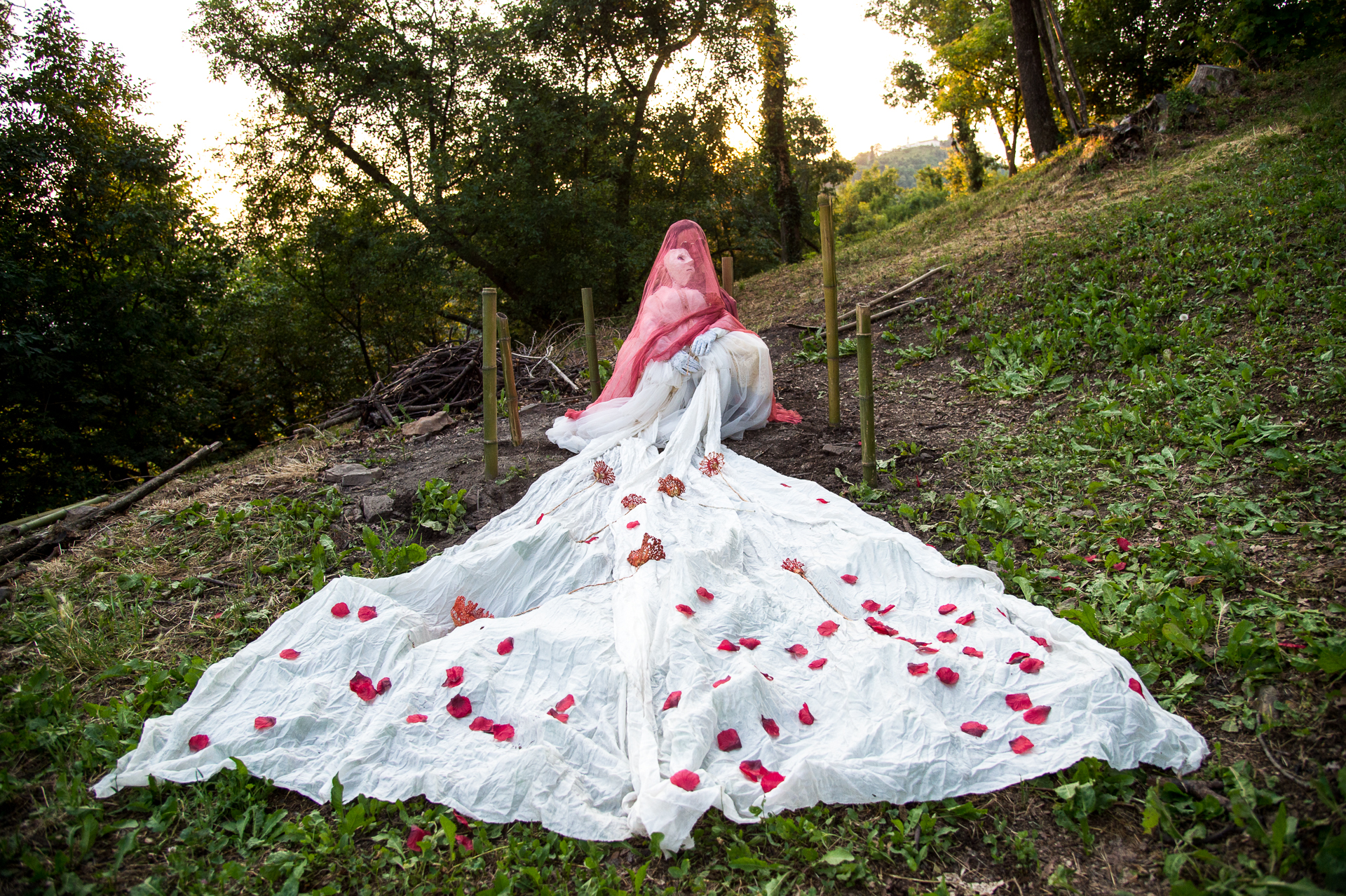
The real and theatrical landscape is full of winding paths, detours and climbs, just like our souls.
Hamlet wanders like a spectre, ignoring the usual good manners, beyond the borders of the orderly life of those who are apparently content with an ephemeral and vanishing form of happiness. Hamlet represents anxiety, that inner torment which never lets us say “I am truly happy”; that unending indecision between coming and going that never lets us simply stay, and which compels us to start anew every time. In the performance Hamlet becomes the voice within us which prevents us from going over the limit, from looking to the future, from discovering that which should not be seen. Hamlet disturbs secrets which do not want to be revealed. He is a spirit of eternal doubt, endlessly philosophising on his inner torment.
As the spectators walk, they will listen to sounds and readings, and the steps and breathing of the others around them fill the air. The woodland path they follow is punctuated by scenes and apparitions. Hamlet, a personal matter is both a collective rite and an individual experience in which everybody is invited to explore his own doubts and desires. The slow pace become a communal experience, and the mind, with its own continuous beat, digs deep as it explores its personal Hamlet. The landscape becomes a maze in which the prince of Denmark wanders.
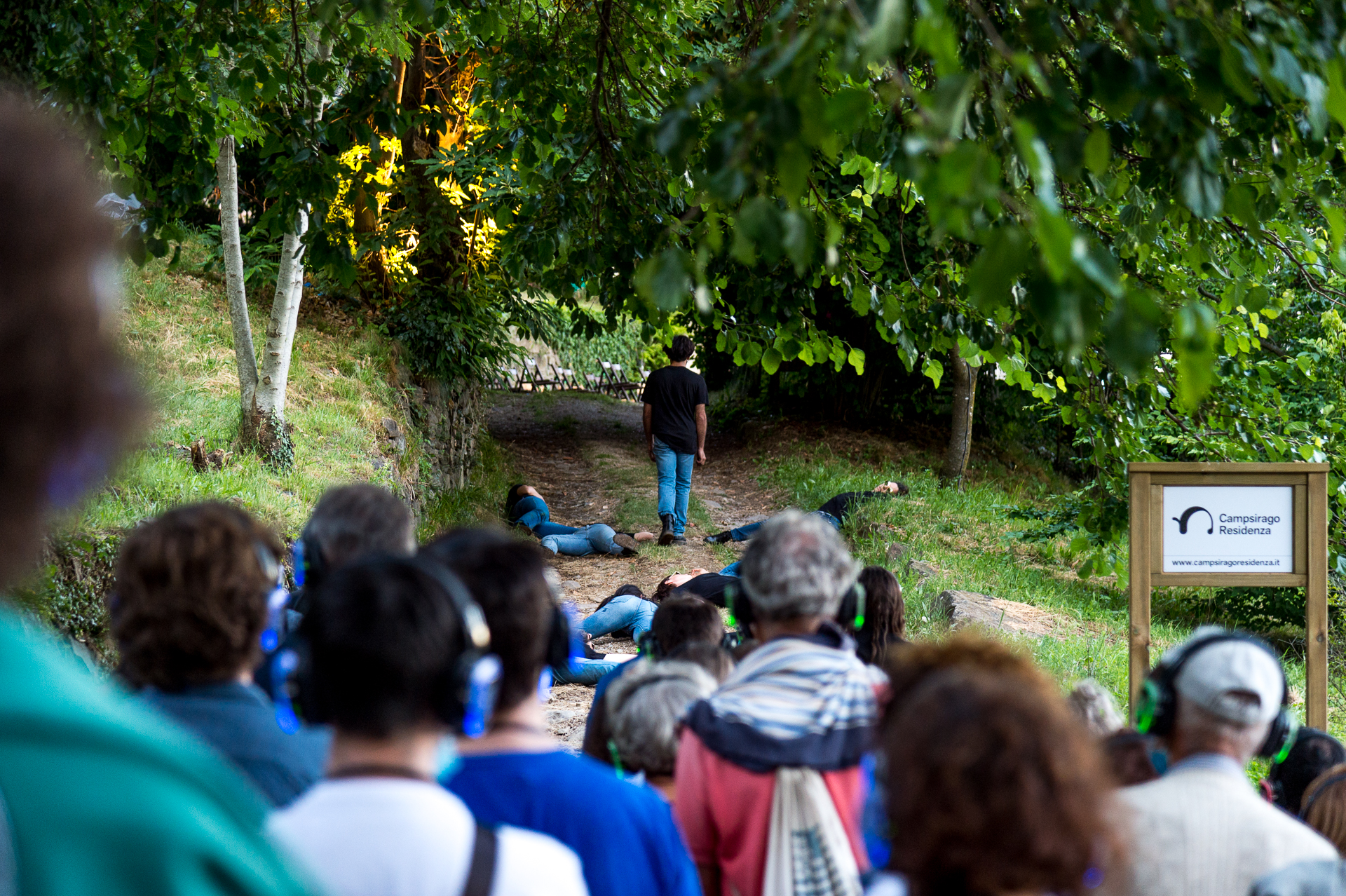
Finally, all the spectators reunite to contemplate the death caused by ours and Hamlet’s torment. We return to an empty, ruined and spacially structureless court. Here the cage, metaphor for the doubts trapping our ego, crumbles and the desires trapped within it go free. A Horatio-Hamlet announces the coming of dawn which will put the wandering spirits to rest. Look – he says, turning towards the scenery – the night in russet mantle clad, walks o’er the tree-tops of yon high western hill. Break we our watch up; and by my advice let us question what we have seen to-night for, upon my life, this spirit, dumb to many, will speak to you.
The spirit of the final act is Nature. Hamlet, a personal matter ends on a message of hope: we can find salvation by looking deep into our fundamental nature.
directors Anna Fascendini, Giulietta de Bernardi, Michele Losi | with Anna Fascendini, Barbara Mattavelli, Benedetta Brambilla, Giulietta de Berardi, Liliana Benini, Marialice Tavaglini, Michele Losi, Sara Milani, Sebastiano Sicurezza, Sofia Bolognini, Stefania Ventura, Stefano Pirovano | costumes Stefania Coretti | music Diego Dioguardi, Luca Maria Baldini | script Sofia Bolognini | based on texts from the people who took part in the higher education workshop on theatre in the landscape and on Shakespeare’s Hamlet | a Campsirago Residenza production
Reviews
The radical action of “Hamlet, a personal matter” takes place in a delocalised landscape, the result of the work of small enclaves of people. The result is something like like a long magical nursery rhyme. “Hamlet, a personal matter”, silences the audience and strangles the words in the actor’s throats like a violent embrace, while the performers’ transparent bodies respond to the suggestions provided by the land and react to the theatrical opportunities and unforeseen events which ad outdoor location can provide. Vittoria Majorana and Damiano Pellegrno – Altre Velocità
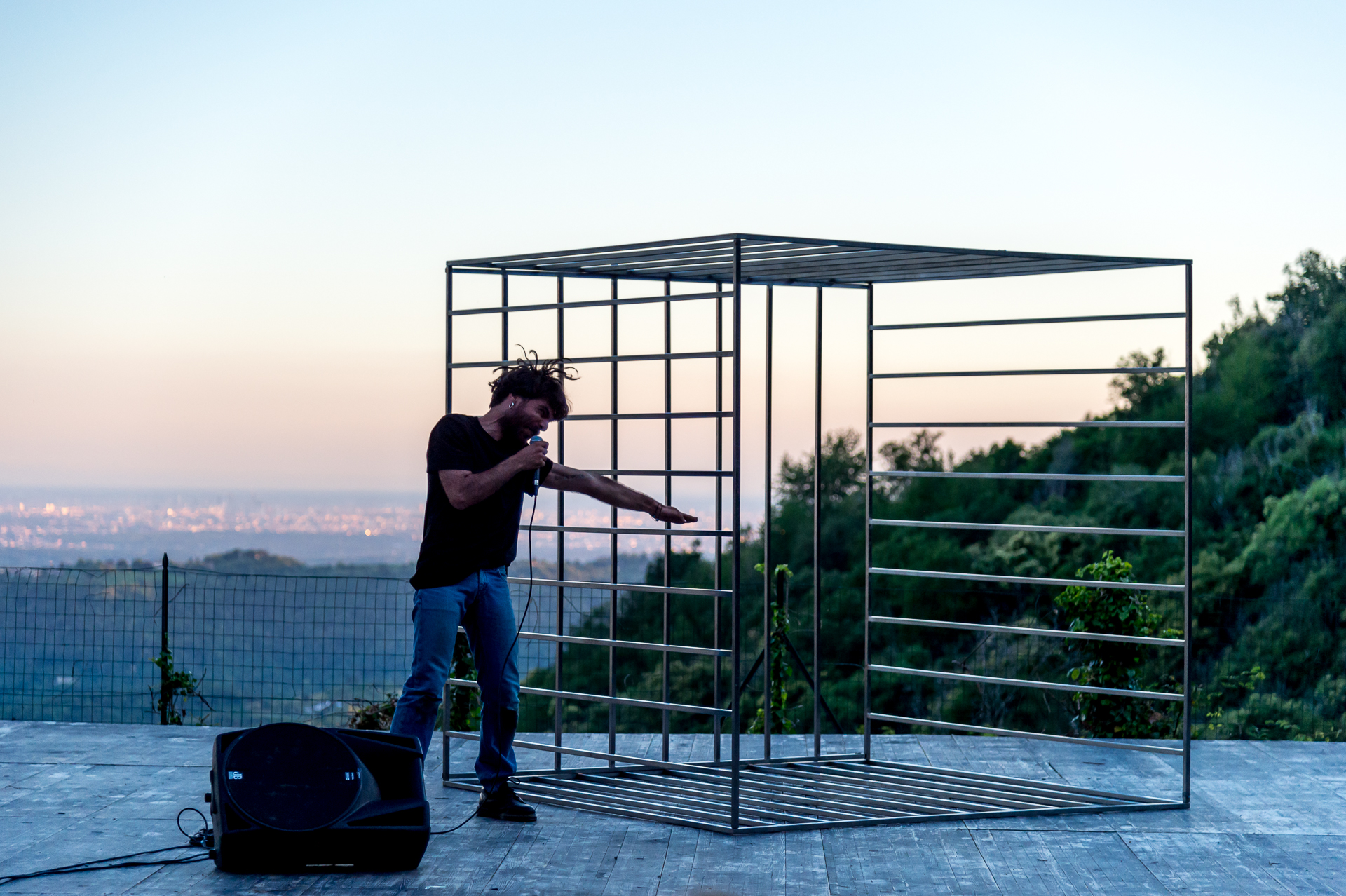
This work is a shining example of what I have called expanded theatre or augmented reality. The ancient text, which provides solid boundaries for theatrical exploration, is exploded both in itself, allowing space for new visions and additions, and in its dramatic presentation, which allows for the creation of three different paths to follow. Each of these is distinct but they form a coherent whole in which each person can find pieces of a larger identity. Within this complex but attractive dramatic structure, the cogent syntax uses a variety of acting modes and styles, for example alternating between amplified voices, natural sounds and and headphone audio. This exploration of the innumerable potentialities of the human voice reminds us of the style of Carmelo Bene or Leo De Bernardinis. All of this strengthens the dissociating effect which seeks to render on scene hidden moments in the Shakespearian tragedy. This creates a strong fusion between the performance and the spectators. They are transformed, gradually becoming more confident as they traverse this unsettled landscape in the actors’ company. They metamorphose from civilized city-dwellers to a part of the performance, gnomes watching the events unfold, like in “A Midsummer Night’s Dream”. Maria Dolores Pesce – Dramma
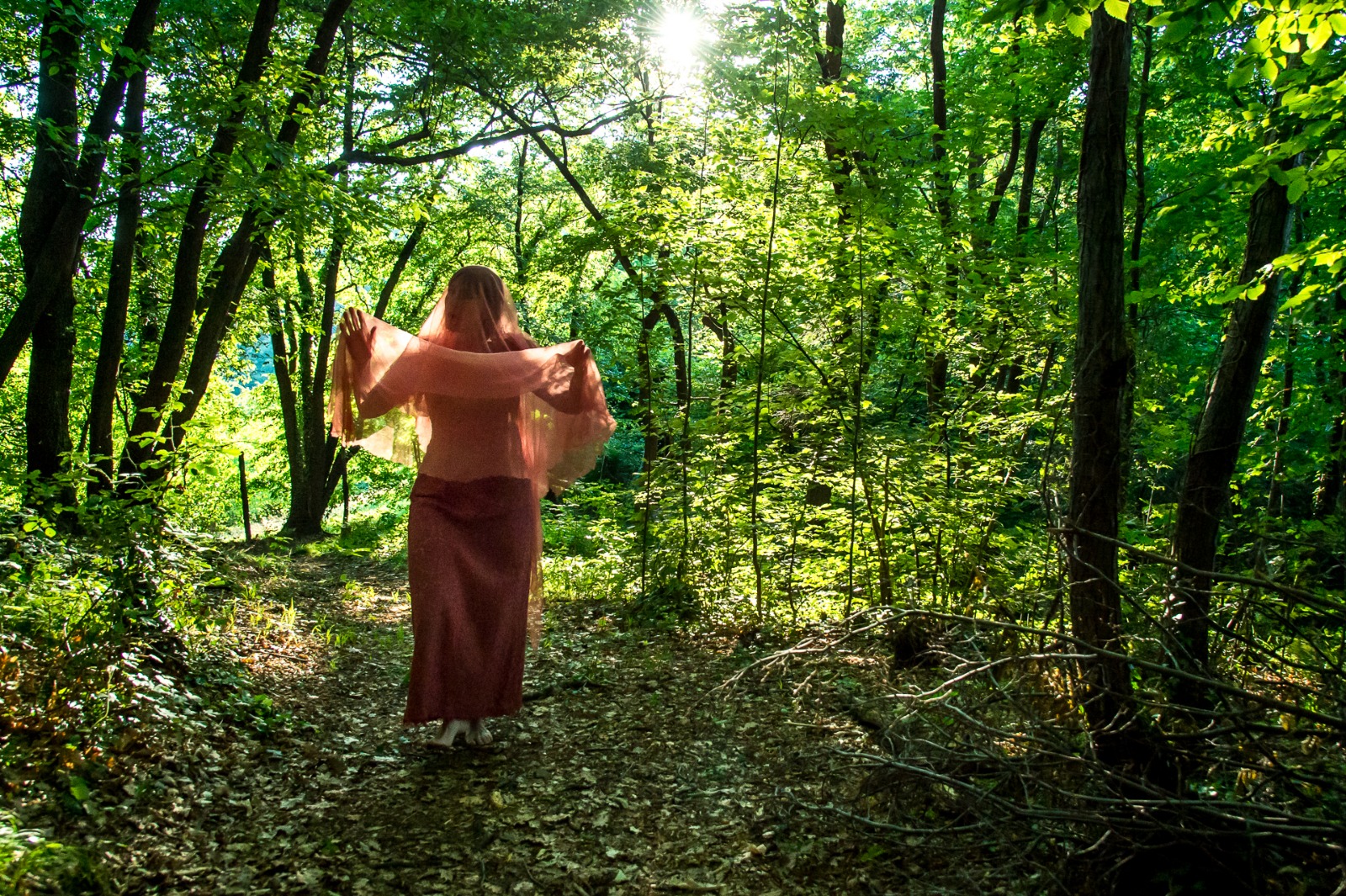
The paths through the natural environment are an inner journey. The script, either live or in headphones, is raw material, and it is up to us to plane it down, shaping it to our needs. It is up to us to create order in this multi-chaotic tornado of conflict and crime. We must find a hidden order which must be sought out in the quiet moments between the trees. Prayer and death become a collective ritual, assisted by Stefania Coretti’s costumes, which question and converse with the scenery. We breathe. We play among ourselves and with the actors. We march in a single, ever-changing file. We cross lines and exchange experiences with other spectators. We create a net of looks, smiles and emotions. This is also a part of the collective ritual of the theatre. Like in ancient civilizations, the darkness of the wood becomes an initiation rite. Vincenzo Sardelli – Krapp’s Last Post
The path that winds through the wood is strewn with the tatters of a story: rose petals, torn clothes, signposts. In the distance dancing figures mingle with the branches of the trees, shouts and songs occasionally disturb the monologue which Hamlet never tires of delivering to the spectator’s ears. The three groups follow three different roads: the path of love, the path of madness and the path of doubt. Sometimes the paths of two groups cross, they exchange quick, curious glances, and then each proceeds on their own way, while Hamlet, in their headphones, talks of the horizon, of choices to make, of the wood which acts as a backdrop. In the wood, pieces of Shakespeare’s script can be found, scattered thoughts, rewritings. The three groups reunite only at the half-way point, in a difficult place where the steep slopes are hidden by trees and bamboo canes. A gravedigger, who was and will be Hamlet, a hand hidden behind a cloth which gathers and reclaims everything, makes holes in the ground and curses as he digs. He fills and digs again before becoming two people: Busillis! The two gravediggers cry as they dig, and it is not the man to go to the water but the opposite. This is Ophelia’s funeral: all the spectators are gathered, crouching on the steep slope to observe Ophelia’s second death, mummified and preserved by the water. The rose petals which had marked the spectator’s path seal the farewell. Angela Forti – Teatro e Critica
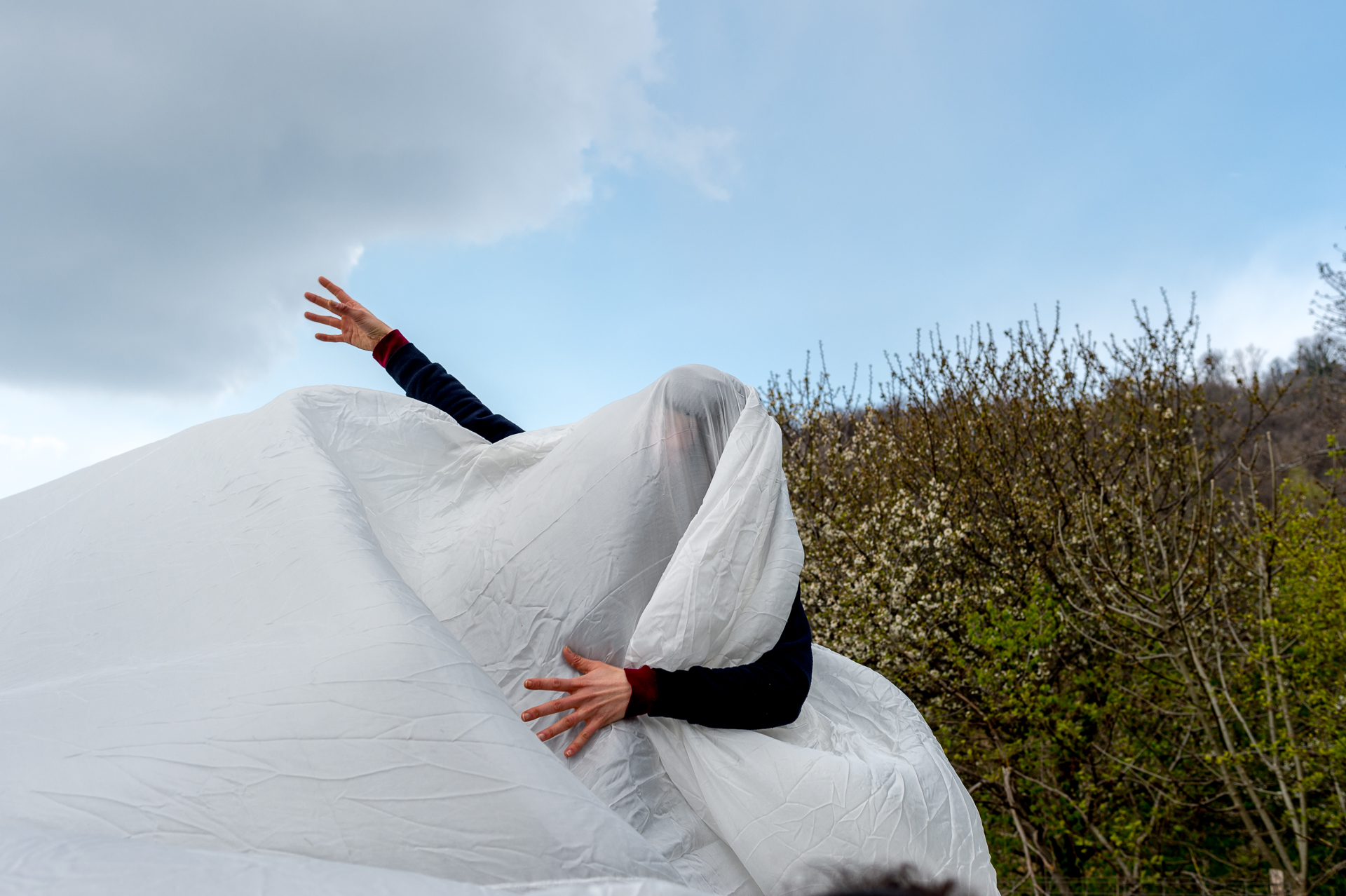
Everybody deserves a round of applause for the confidence displayed in performing both on the stage and in the woods. The way the performers move, elf-like, from one tree to the next, showing themselves exactly at the right moment is always surprising. They walk along paths which inexperienced feet would find treacherous, but they know every twig and root. Sebastiano Sicurezza’s Hamlet is particularly worthy of praise, considering that he has the honour of closing the story. You really need to see the show three times to appreciate its three different finales, but it would also be worth seeing it a fourth time just to carefully observe each of the actors’ expressions. I wholeheartedly recommend “Hamlet, a personal matter”: Shakespeare lovers will be able to appreciate the reimagining of the bard’s play, but its poetics are open to all, and it is an experience which allows us to commune with the natural landscape, with the earth, the water and the air. Ivan Filannino – Milano Teatri
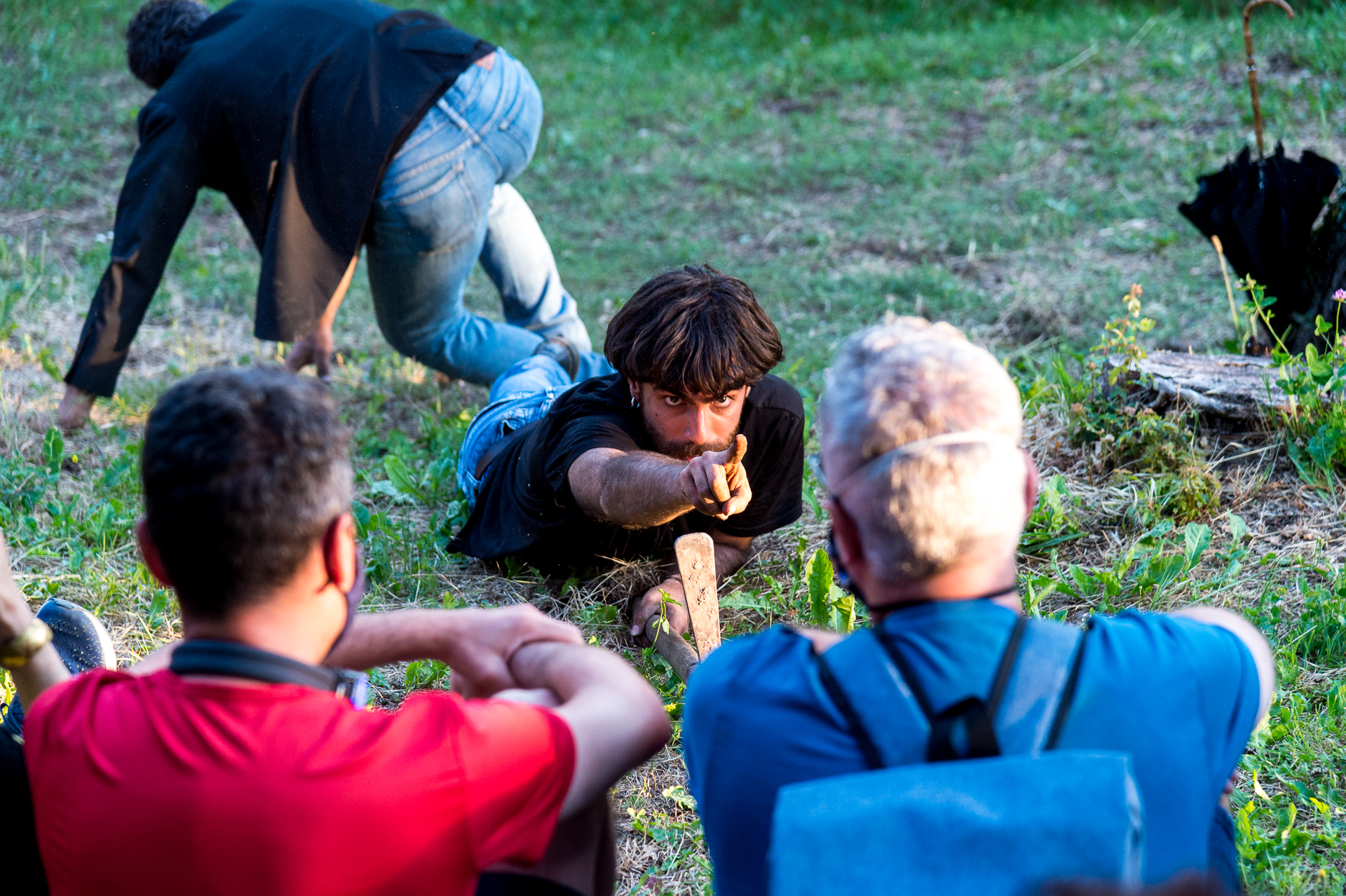
There are objects strewn all along the path: umbrellas, shoes, flower petals, veils which appear to have been left by Magritte as clues which should help us to solve our doubts, but in reality confuse us even more and remind us that in life everything is a mystery. Ophelia’s funeral is extremely evocative, the scene with the two grave diggers is very amusing. Sebastiano Sicurezza is the propulsive, energetic centre of the piece. Raffaella Roversi – 2duerighe
Photos: Alvise Crovato

